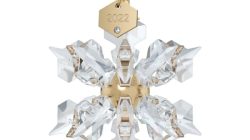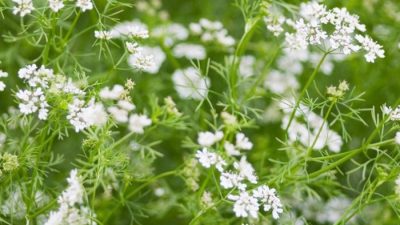Manufacturing & Production
Making a satin ball Christmas ornament might seem simple, but there’s a surprisingly detailed process involved, from choosing the right materials to getting the finished product ready for sale. This section will Artikel the steps, compare it to other ornament types, and address potential challenges in production.
The manufacturing process for a satin-covered Christmas ball ornament involves several key steps, starting with material sourcing and ending with packaging. This differs significantly from glass or plastic ornaments, impacting both cost and environmental considerations.
Material Sourcing and Preparation, Satin ball christmas ornament
The first step is sourcing the materials: high-quality satin fabric in a variety of colors and patterns, polystyrene foam balls (the core of the ornament), strong adhesives (often hot glue), ribbons or strings for hanging, and packaging materials like boxes and tissue paper. The satin fabric needs to be inspected for defects and cut to the appropriate size for covering the foam balls.
The foam balls themselves need to be the correct size and density for a consistent final product.
Ornament Assembly
The satin fabric is carefully stretched and glued onto the foam ball. This requires precision and skill to ensure a smooth, wrinkle-free finish. Excess fabric is trimmed away. A small opening is left to insert the hanging loop (ribbon or string), which is then secured. Quality control checks are performed at this stage to identify any imperfections in the covering or the attachment of the hanging loop.
This step is crucial for the final aesthetic appeal of the ornament.
Comparison with Glass and Plastic Ornaments
Manufacturing satin ball ornaments differs significantly from glass or plastic ones. Glass ornaments involve complex molding and blowing processes, demanding specialized equipment and skilled labor, leading to higher production costs. The environmental impact is also greater due to the energy consumption in the glass manufacturing process and the potential for breakage during transport. Plastic ornaments are generally cheaper to produce, using injection molding techniques, but have a higher environmental impact due to the use of plastics and their non-biodegradability.
Satin ornaments offer a more sustainable alternative, using readily available materials and a simpler manufacturing process. However, the sourcing of sustainable materials for the satin fabric should be considered for a truly eco-friendly option.
Quality Control and Packaging
After assembly, each ornament undergoes a thorough quality check to ensure it meets the desired standards. This involves checking for any imperfections in the satin covering, ensuring the hanging loop is securely attached, and verifying the overall appearance. Ornaments that don’t meet quality standards are rejected. Finally, the ornaments are packaged individually in protective materials, such as tissue paper, and placed in boxes for retail sale.
Efficient packaging minimizes damage during transport and enhances the presentation of the product.
Challenges in Manufacturing
Maintaining consistent quality across a large batch of ornaments presents a challenge. The manual nature of covering the foam balls with satin fabric makes it susceptible to variations in the final product’s appearance. Minimizing waste is another concern; efficient cutting of the satin fabric and proper disposal of excess materials are crucial for sustainable production. Furthermore, ensuring the adhesive used is strong enough to withstand handling and storage without compromising the satin fabric’s integrity is a significant factor in quality control.
Production Process Flowchart
| Step | Description | Materials | Quality Control |
|---|---|---|---|
| 1. Material Sourcing | Sourcing satin fabric, foam balls, adhesives, ribbons/strings, packaging | Satin, foam, glue, ribbon, boxes, tissue paper | Fabric inspection, foam ball quality check |
| 2. Fabric Cutting & Preparation | Cutting satin fabric to appropriate size | Satin fabric, cutting tools | Fabric defect inspection |
| 3. Ornament Assembly | Gluing satin fabric onto foam ball, attaching hanging loop | Foam balls, satin fabric, glue, ribbon/string | Smoothness of covering, secure loop attachment |
| 4. Quality Control Check | Inspection for defects, ensuring consistent quality | N/A | Visual inspection, dimensional checks |
| 5. Packaging | Packaging ornaments individually in boxes | Boxes, tissue paper | Packaging integrity check |
FAQ Insights: Satin Ball Christmas Ornament
Can I wash satin ball ornaments?
Nah, better not. A gentle dusting is usually enough. A wet cloth might ruin the satin finish. Bayangin aja, kusut!
Are satin ornaments fragile?
Not as much as glass ones, but still, handle with care, ya! Jangan sampe jatuh, ntar pecah hati.
Where can I find unique satin ball ornament designs?
Etsy and independent craft shops are your best bet! You might find some truly unique and handcrafted designs there. Lebih unik dari tetangga!
How do I store satin ball ornaments after Christmas?
Wrap them individually in tissue paper and store them in a box. Keep them away from direct sunlight and moisture. Jangan sampai meleyot!
Okay, so like, satin ball Christmas ornaments are totally fetch, right? They’re so glam and low-key perfect for a minimalist vibe. But for my first apartment, I needed something extra special, so I checked out this awesome guide on first apartment christmas ornament ideas. After that, I decided to add some sparkly satin balls to my tree – they totally elevate the whole look, you know?










